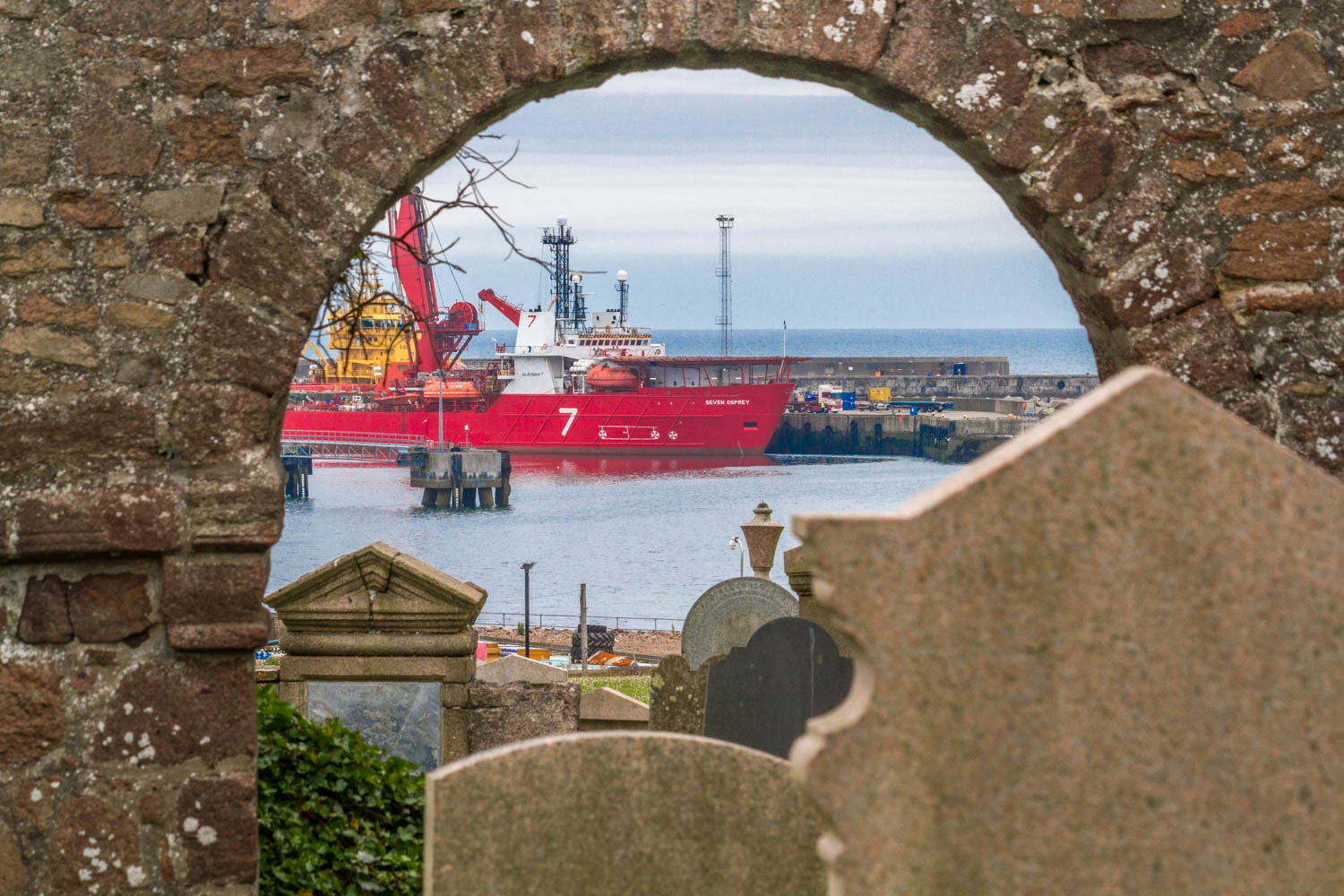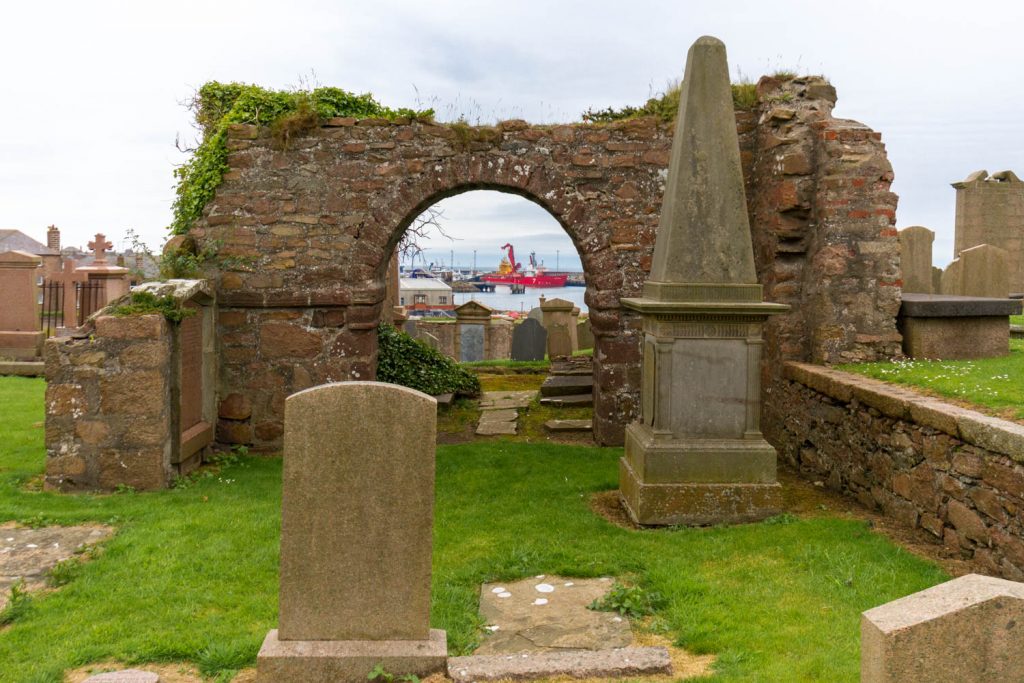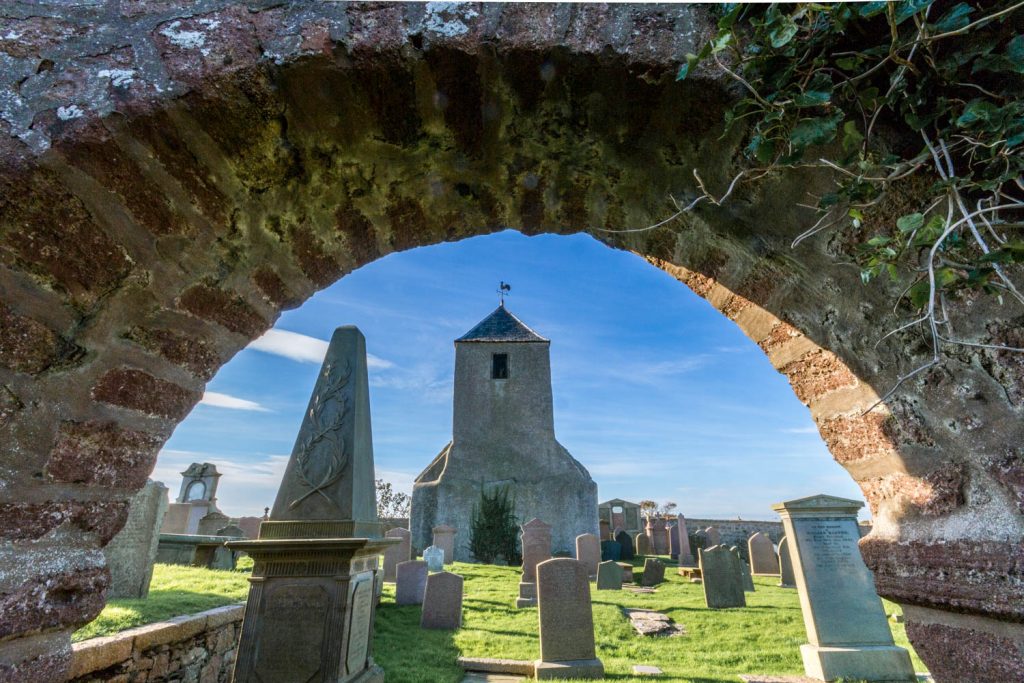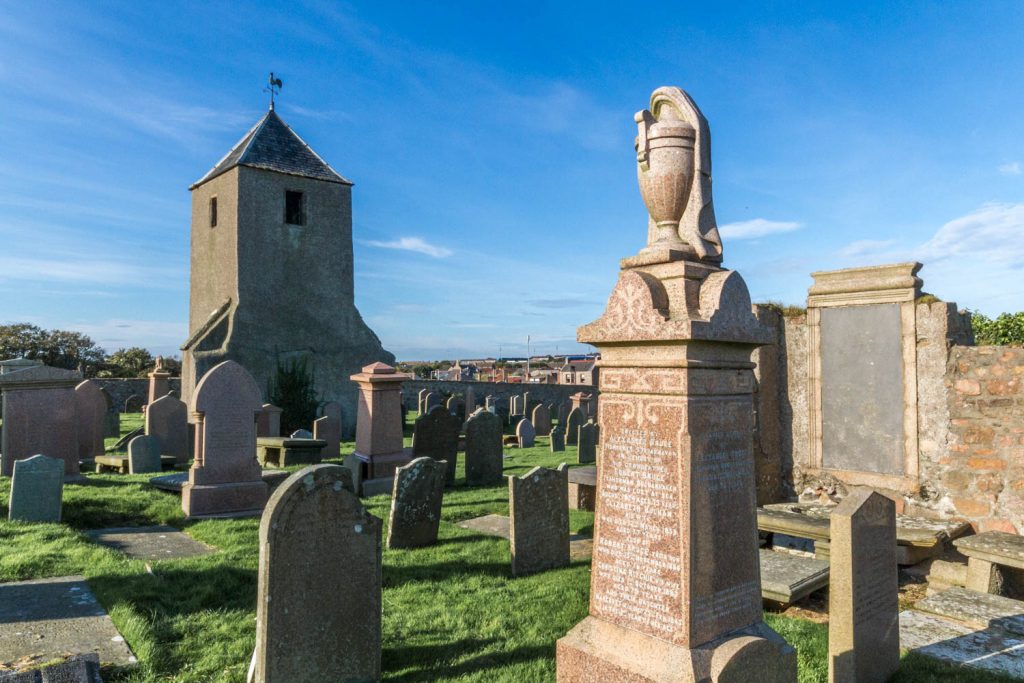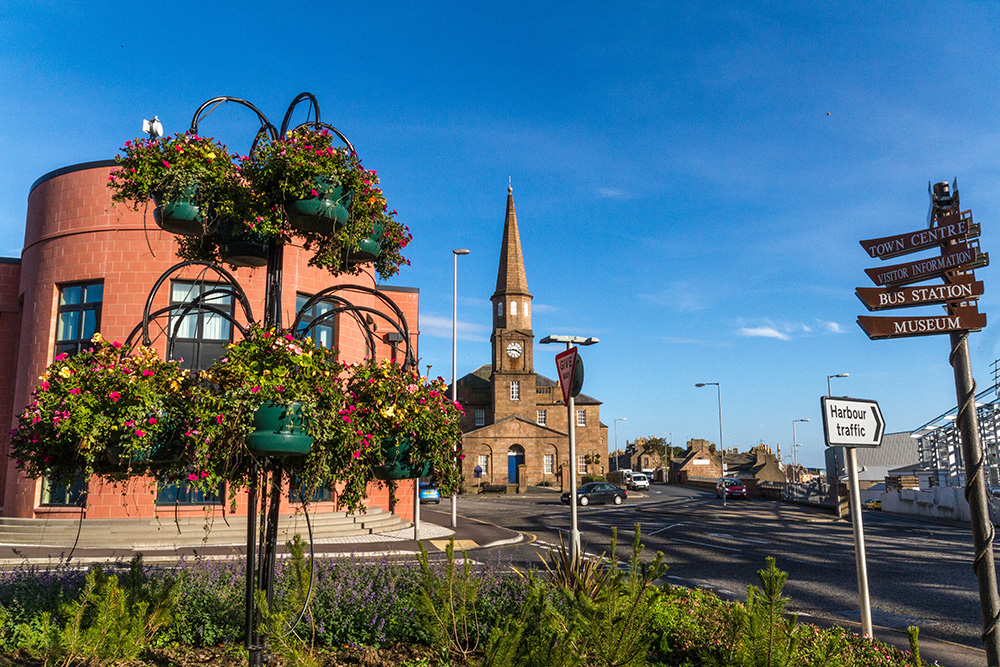I stood looking through the elegant Norman arch of the chancel in the old St Peter’s Church in Peterhead, down towards the boats in the harbour. I tried to picture what it must have been like for the Peterhead folk who worshipped here in days gone by. The arch and the chancel walls are all that remain of the 13th Century church. We know little of the pre-reformation church, other than that it belonged to the Abbey of Deer. I like to think of these early Peterhead fisherman standing where I stood, looking through this eastward facing arch towards the sea, hearing the words of the Latin Mass intoned by the priest.
How different it would have been for the congregation in 1567 listening to the first post-reformation minister we know of, Rev Gilbert Chisholm, as he read the scriptures in English and preached to his congregation. In those turbulent days of the Reformation, Mr Chisholm was minister of Peterugie (as the Peterhead district was then known) but also of Deer, Foveran and St Fergus. Perhaps it was Archibald Reid who was preaching to the congregation. He was a Reader at the same time, perhaps the regular occupant of the St Peter’s Pulpit because of the wide geographical responsibility of Mr Chisholm.
A bell tower was added to the church in the mid 17th century. The bell would summon the congregation to worship in the little church which had stood there some 400 years. At this time the church in Scotland was in turmoil with the episcopal element in conflict for ascendency with the Presbyterians, and civil war ranged in all three Kingdoms of ~Scotland, England and Ireland. We know that ministers from Peterhead were strong proponents of the National Covenant, despite the pro-Episcopalian feeling of much of Aberdeenshire. Peterhead was certainly caught up in the church conflicts of the time, with one minister deposed for holding a ‘conventicle’ while later, another resigned to establish an Episcopal meeting in Peterhead. No doubt the fishermen and their wives who looked through the eastward facing arch would have been forming their own opinions about the church in Scotland.
But the tower had another use in the 19th Century – a watch tower for relatives of those recently buried in the kirkyard. They guarded the graves against ‘resurrectionists’. These might be medical students or professional grave robbers who raided graves to steal fresh corpses which were used for dissection in medical schools. Writing in A History of Peterhead, J T Findlay describes how, ‘the relatives of the dead mounted guard over newly buried bodies, and many times at the dead of night has the frenzied clangour of the old bell awakened the inhabitants of the town to tell them that the grave openers were at their horrible work again.
By this time in the 19th Century the congregation had moved from the old mediaeval church. Indeed there is some indication that the old church had to be demolished except for the chancel walls and arch which are still standing, and of course the bell tower.
Writing in the First Statistical Account of Scotland in 1777, Rev George Moir describes the problems he was facing in the old church: The established church here is more numerous than at any former period, if one can judge from the number of communicants, the regular progressive increase of the collections for the poor every Lord’s Day and the numerous complaints for want of room in the church which is now far from being sufficient for those who wish to attend public worship there, and many are obliged to take seats elsewhere for want of room in the church.
To solve the problem a new church was built on the Little Links in the Kirktown of Peterhead in the late 1700s. It was located where the houses now stand on Kirk Street, opposite the Gordon’s Memorial. No longer would the worshippers look out over the sea the sea through the arch. Dr Moir was very pleased with his new building: it is a elegant building 78 feet long and 38 feet broad over the walls, which are of a proper height to admit of the galleries being sufficiently raised. From the position of the pulpit and the arrangement of the seats, both in the galleries and on the ground-floor, it is the most convenient place of worship with which I am acquainted…….the pulpit being placed at an equal distance from the east and west end of the north wall and every person both seeing and hearing the minister. The whole expense of the building was only £520 sterling.
The eyes of the congregation would be on the minister in the pulpit, then. No distractions!
No trace this building remains. Clearly , despite what the good Dr Moir may have hoped, it was not fit for purpose, with indications that there may have been building problems, and the congregation moved to another building, the present Muckle Kirk which was opened in 1806. I can just immagine the excitement of the folk of Peterhead at their grand new building, with its imposing steeple.
As for Dr Moir, he has the distinction of having served the people of Peterhead in three different church buildings during his ministry from 1763 till his death in 1818.
